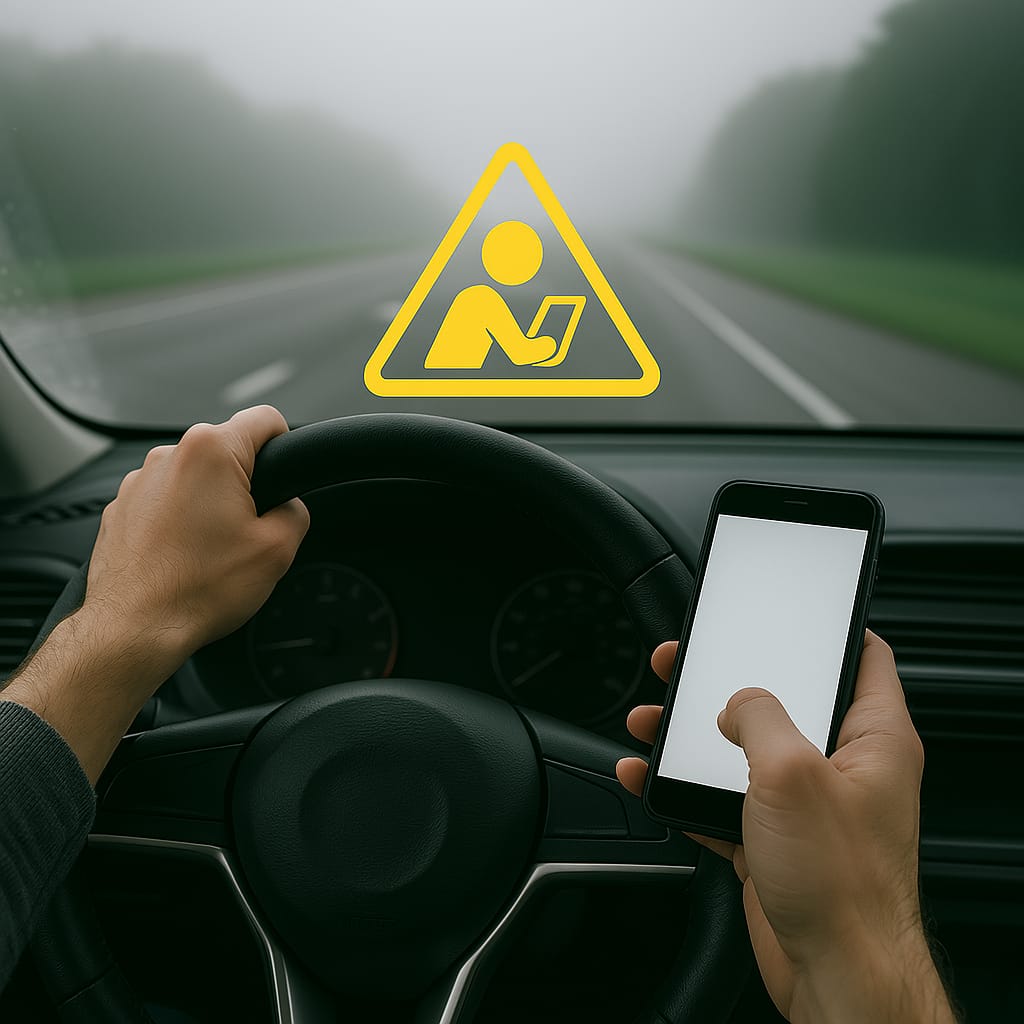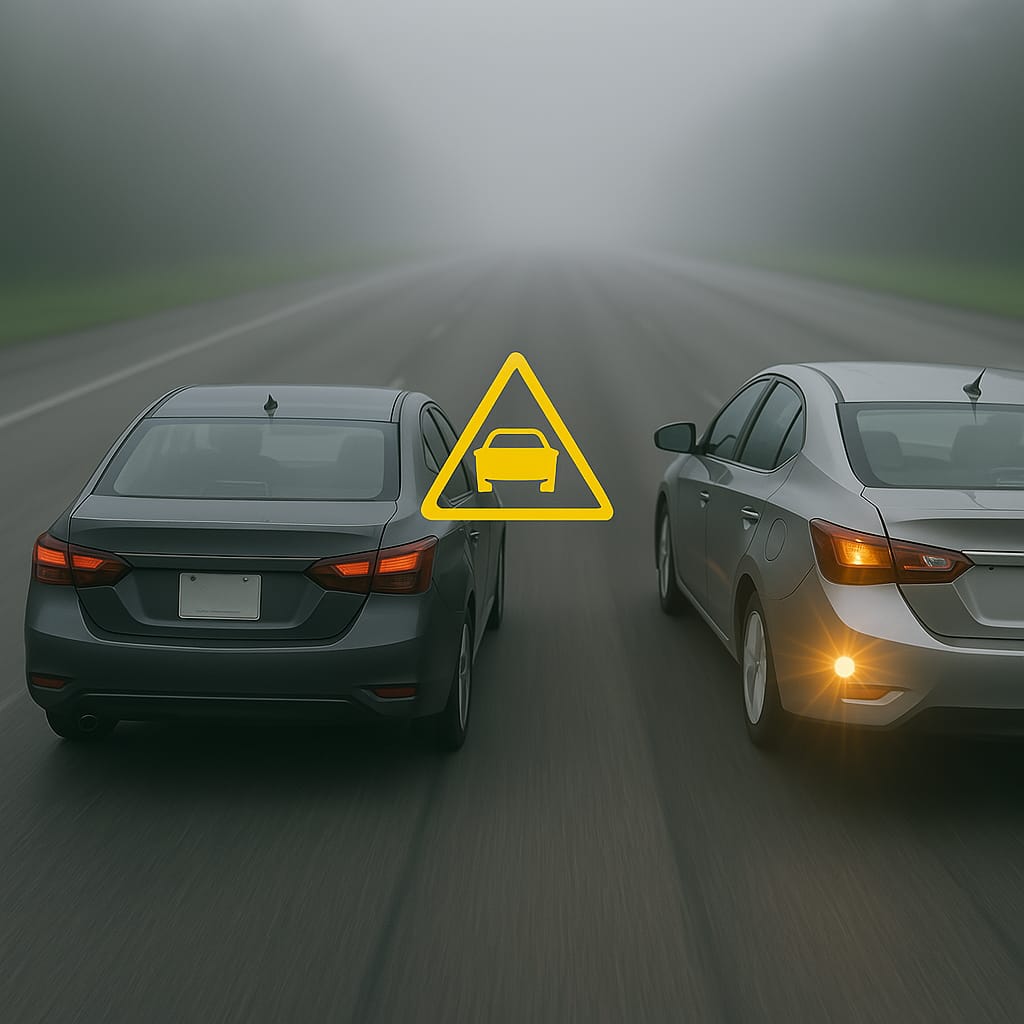Lane Departure Warning Systems: Your Guardian on the Road
Imagine this: You’re driving home after a long day at work. The highway is quiet, the hum of the engine is soothing, and your eyelids feel heavy. Suddenly—*beep beep beep!—your car jerks you awake as it warns you that you’re drifting out of your lane. That’s your *Lane Departure Warning (LDW) system stepping in, possibly preventing a deadly crash.
1. Understanding Lane Departure Warnings: How They Work & Why They Matter?
1.1 What’s an LDW System?
A lane departure warning (LDW) system is like an extra set of eyes on the road. It’s designed to alert you when your vehicle starts to drift out of its lane without signaling, helping prevent accidents caused by inattention. Think of it as a gentle nudge to keep you on track, especially during long highway drives.
1.2 How Do They Work?
LDW systems rely on a combination of cameras and sensors, typically mounted near the windshield or rearview mirror. These cameras scan the road ahead, tracking lane markings like dashed or solid lines. Advanced algorithms analyze the vehicle’s position relative to these lines. If the system detects an unintentional drift—say, you’re veering left without using your turn signal—it triggers an alert. This could be a visual warning on your dashboard, an audible beep, or even a vibration in your steering wheel or seat.
For example, in a Nissan vehicle, a front-mounted camera monitors lane markers. If you start to drift, a flashing indicator and chime kick in, sometimes paired with a steering wheel buzz for extra emphasis. It’s like your car is saying, “Hey, stay focused!”
1.3 Why They Matter?
Highway safety is a big deal, and LDW systems are making a dent. According to the National Highway Traffic Safety Administration (NHTSA), lane departure crashes account for a significant portion of roadway fatalities. The Insurance Institute for Highway Safety (IIHS) estimates that LDW systems could prevent up to 7,529 fatal crashes caused by vehicles leaving the roadway. These systems are particularly effective at reducing sideswipe collisions, head-on crashes, and rollovers by alerting drivers before it’s too late.
1.4 Real-world impact?
A 2023 IIHS study found that vehicles with LDW and lane-keeping systems had lower rates of single-vehicle, sideswipe, and head-on crashes reported to police. That’s not just a stat—it’s lives saved and families kept whole.
2. Common Causes of Lane Departure Accidents & How to Avoid Them?
Lane departure accidents aren’t just random mishaps; they’re often tied to specific behaviors or conditions. Let’s break down the culprits and how LDW systems help you dodge them.
2.1 Distracted Driving
We’ve all been there—glancing at a text, adjusting the radio, or grabbing a snack. In 2022, distracted driving contributed to 3,308 fatalities in the U.S., with many involving lane departures. LDW systems catch these moments, alerting you when your focus slips.
Tip: Use hands-free devices, keep your phone out of reach, and set up your GPS before you hit the road.
2.2 Drowsy Driving & Microsleeps
Ever felt your eyelids get heavy on a long drive? Drowsy driving is a silent killer, causing an estimated 21% of fatal crashes annually. Microsleeps—brief, involuntary naps lasting a few seconds—can send you drifting across lanes. LDW systems act as a wake-up call, giving you a chance to pull over.
Tip: Take breaks every two hours, share driving duties, and avoid late-night trips when possible.
2.3 Poor Road Markings & Weather Conditions
Faded lane lines, snow-covered roads, or heavy rain can make it tough to stay in your lane. LDW systems rely on visible markings, so they may struggle in these conditions. For instance, a wet road can trick cameras into misreading tire tracks as lane lines, leading to false alerts.
Tip: Slow down in bad weather, keep your windshield clean, and don’t rely solely on LDW—your eyes are still the boss.
3. Lane Departure Warning vs. Lane Keeping Assist: What’s the Difference?
LDW and lane keeping assist (LKA) sound similar, but they’re like cousins with different personalities. Here’s how they stack up.
3.1 LDW: The Watchful Alarm
LDW systems warn you when you’re drifting but don’t take action. They’re great for alerting distracted or drowsy drivers but rely on you to steer back. Think of it as a loud friend yelling, “You’re veering!”
Pros:
- Simple, affordable, encourages driver responsibility.
Cons:
- No corrective action, so you must respond quickly.
- Can be annoying if overly sensitive.
3.2 LKA: The Gentle Guide
LKA goes a step further. If you don’t respond to the warning, it can gently steer or brake to guide your vehicle back into the lane. Some advanced versions, like lane centering assist (LCA), keep your car perfectly centered.
Pros:
- Actively prevents lane drift, reduces driver fatigue on long drives.
Cons:
- More expensive, may feel intrusive to some drivers.
- Struggles with poor lane markings or sharp curves.
3.3 Best Vehicles with These Features:
Many automakers offer LDW and LKA, but some stand out:
Toyota: The 2023 Corolla’s LCA is a hit for stress-free highway drives.
Volvo: Known for safety, models like the XC90 offer robust LDW and LKA as standard or optional features.
Tesla: Its Lane Departure Avoidance combines warnings with corrective steering, paired with advanced AI.
Nissan: Affordable models like the Altima feature intuitive LDW systems.
Consumer Reports notes that drivers love LKA for long trips but sometimes find LDW alerts too aggressive. Test-drive these systems to see what feels right for you.
4. What to Do When Your Lane Departure Warning Keeps Beeping?
Nothing’s more annoying than a car that won’t stop beeping when you’re driving just fine. False LDW alerts are common, but they’re fixable. Here’s why they happen and how to troubleshoot.
4.1 Possible Causes:
Dirty Windshield: Smudges or bugs can block the camera’s view, confusing the system.
Weak Calibration: After a windshield replacement or alignment, the system may need recalibration.
Worn Tires or Alignment Issues: Uneven tire wear or poor alignment can mimic lane drift.
Faded or Covered Lane Markings: Snow, rain, or old paint can throw off sensors.
4.2 Troubleshooting Tips:
Clean the Windshield: Use a microfiber cloth and glass cleaner to ensure the camera’s view is clear.
Check Tire Condition: Inspect for uneven wear or low pressure. A quick visit to a mechanic can fix alignment issues.
Drive on Clear Roads: Test the system on a well-marked highway to see if alerts persist.
Consult Your Manual: Some systems can be adjusted for sensitivity or turned off temporarily.
4.3 When to Seek Help:
If false alerts continue, it’s time for professional recalibration. Dealerships or certified auto shops can reset the system, especially after major repairs. For example, a misaligned camera after a windshield replacement can trigger constant beeps. Don’t ignore it—proper calibration ensures the system works when you need it most.
4.3.1 State & Federal Lane Departure Safety Initiatives DOT & NHTSA Regulations
The U.S. Department of Transportation (DOT) and NHTSA are big players in promoting LDW systems. In 2009, NHTSA began studying whether to mandate LDW and frontal collision warning systems. While not yet required in the U.S., the European Union made lane keeping assist mandatory for new cars and vans in 2022 under the Emergency Lane Keeping System regulation.
NHTSA’s New Car Assessment Program (NCAP) now highlights vehicles with LDW and LKA, encouraging automakers to include them. A 2024 NHTSA regulation also mandates automatic emergency braking by 2029, signaling a push for broader safety tech adoption.
4.3.2 States with High Lane-Departure Crash Rates
Rural states with long highways see higher lane-departure crashes. According to NHTSA data, states like Wyoming, Montana, and South Dakota have elevated rates due to sparse traffic, fatigue-inducing drives, and poor road conditions. Urban areas like California and Texas also report significant incidents, often tied to distracted driving. Targeted campaigns in these states promote LDW-equipped vehicles and driver awareness.
4.3.3 Future Tech: AI and Autonomous Lane Corrections
The future is exciting. AI-powered LDW systems are evolving, with companies like Tesla integrating neural networks for smarter lane detection. Automated lane keeping systems (ALKS), which follow lane markings without human input, are being tested for Level 3 autonomy. These could reduce crashes even further, but legal hurdles remain—current laws require constant driver input.
5. Are Lane Departure Systems Making Drivers Too Complacent?
5.1 The Over-Reliance Debate
LDW and LKA are lifesavers, but there’s a catch. Some worry they make drivers too reliant on tech, leading to complacency. A 2012 Highway Loss Data Institute study raised eyebrows, suggesting LDW might slightly increase accident rates in some cases, possibly because drivers assumed the system would “handle it.” An IIHS concern echoed this, noting that dashboard displays can distract drivers or make them less vigilant.
5.2 What Studies Say?
A 2020 Consumer Reports survey found mixed feelings. While drivers loved LKA for reducing stress, some felt LDW alerts were too frequent, causing them to ignore or disable the system. A 2017 study by Sternlund et al. showed that LDW-equipped vehicles had lower crash rates, but only when drivers stayed engaged. The takeaway? These systems are tools, not substitutes for attention.
5.3 Best Practices for Staying Alert
Stay Engaged: Keep your hands on the wheel and eyes on the road, even with LKA active.
Learn Your System: Read your car’s manual to understand its limits, like poor performance in snow or on curves.
Take Breaks: Use LDW as a backup, not a crutch. Pull over if you’re tired or distracted.
Test It Out: During a test drive, see how the system feels. If it’s too intrusive, adjust settings or choose a different model.
6. Your Road to Safer Driving…
Lane departure warning systems are more than just beeps and buzzes—they’re a lifeline for distracted, drowsy, or disoriented drivers. From saving lives on highways to nudging new drivers back on track, LDW and LKA are reshaping road safety. But they’re not perfect. They struggle with bad weather, rely on clear lane markings, and can’t replace an alert driver. By understanding how they work, troubleshooting issues, and staying engaged, you can harness their power while keeping control.
So, next time you hit the road, give your LDW system a little love. It’s watching out for you, ready to chime in when you need it most...
Safe Travels!!
Also read,
https://medium.com/drive-tomorrow/i-wanted-to-trust-my-car-until-it-faced-a-curve-4cc6369d3b0c






